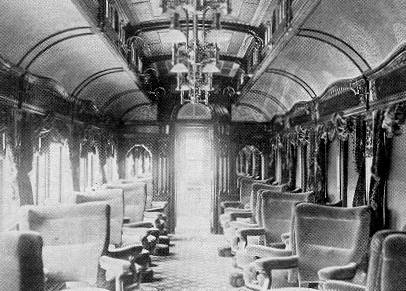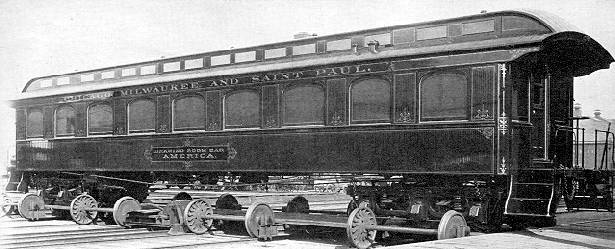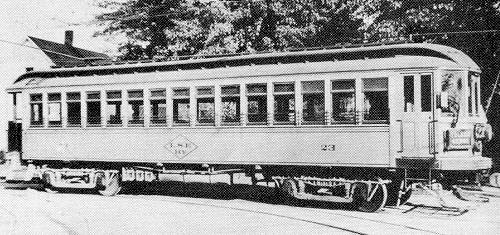Barney & Smith Mfg. Co. - Page 2Barney & Smith was reportedly the largest car builder in the nation until Pullman opened his big plant near Chicago in 1881. In that year Barney & Smith employed more than 1,500 workers. In 1882, capital stock in the company was increased to $1 million to support further growth of the firm.
By 1890, Barney & Smith employed more than 2,000 workers. It entered the electric traction field and its cars were widely used in Pennsylvania, Ohio, Indiana and Illinois. The company grew to be a major supplier of freight and passenger cars in the later half of the 19th century, producing almost 6% of the nation’s total car production. But Barney & Smith had begun to stagnate. Its craftsmanship was superb, its reputation impeccable. But it “lacked the inventive resourcefulness to be on the leading edge of the emerging technology of the railroad industry.”
Although Eliam Barney’s sons had taken an active part in the management of the company, in 1892 the Barney family sold its interest and the firm became publicly traded as the Barney & Smith Car Company, capitalized at $3.4 million. But the new owners of Barney & Smith saw their visions of large profits evaporate quickly. The panic of 1893 struck the company with full fury. Railroads everywhere were going into receivership—even the mighty Union Pacific—and car builders had almost no orders. During 1893 six competitors were closed the entire year and four others from June to December. Barney & Smith paid a common stock dividend, but it was the last for 13 years. In 1894, management decided to turn to the only railroad equipment being ordered: electric street railway and interurban cars. Much of the demand for these cars was in the midwest. Barney & Smith was strategically located to do well, and it did.
By the end of 1897 all the freight car builders were experiencing increases in orders, especially those who quickly got equipped to produce the new steel cars. When Barney & Smith first discussed the idea of steel car production in 1896 it was at the forefront of the emerging technology. But by the time it acted, in 1905, 75% of the steel car surge was over, having been supplied by its competition. By 1912 the interurban market had virtually dried up, the narrow gauge market was gone, and Barney & Smith management was drifting and directionless. Then on 25 March 1913 the Dayton plant was badly damaged by a tremendous flood. The company went into receivership and struggled on. It came out of receivership in 1915, but orders simply drifted off to virtually nothing. The Government seizure of the railroads in 1917 was the beginning of the end. There was business to be had, but only to the lowest bidder, which Barney couldn’t be. Then the post-war depression cut even what orders there were. The gates were closed in February 1921. The entire complex, 47 acres, 76 buildings, machinery, plant locomotives and materials was liquidated 12 June 1924 in a two-day auction that netted just $476,257 against indebtedness of almost $2 million. The firm begun by an ex-teacher and an ex-minister, which had grown to have more than 3,500 workers in a plant covering 59 acres, closed its doors and went out of business after 73 years as a quality car builder. For More Information —Cincinnati Historical Society Bulletin, Spring 1973. Estabrook, Harry M. A History of the Barney & Smith Car Company of Dayton Ohio. Dayton, OH: J.W. Johnson, c. 1911; Reprint, Dayton, OH: Curt Dalton, 1997.
Taylor, Wilma Rugh and Norman Thomas Taylor. This Train Is Bound For Glory: The Story of America’s Chapel Cars. Valley Forge, PA: Judson Press, 1999.
Trostel, Scott D. The Barney & Smith Car Co. Fletcher, OH: Cam-Tech Publishing, 1993.
On-line —
|



